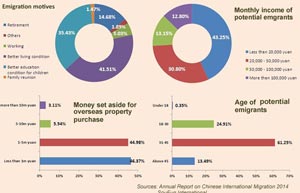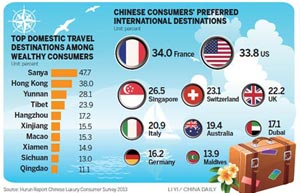China's economy, to crash or just bashed?
(Xinhua) Updated: 2014-02-28 10:21What's more, growth back then and now will be different. According to the National Bureau of Statistics, even one-percent growth from 2013's figure would be equal to the size of China's GDP in 1982.
Average growth of almost two digits over the past three decades may lead to the illusion that no matter the changes in the domestic and overseas environments, a so-called "hard landing" or "calamitous crash" could fall on China any time when growth falls below 10 percent.
The "grow-fast-or-die" mindset is not rational.
It is normal for China's growth to slow because of the rippling effect of the global financial tsunami and domestic economic restructuring. But such a slowdown should not be cause for panic.
|
 |
The factors that have propelled the rise of China into the position of the world's second-largest economy still largely apply -- relatively low labor costs, higher productivity, the substantial improvement of infrastructure, a rising middle class, better macro control, and flourishing global trade.
Added to the momentum is the drive of skilled workers and more experienced entrepreneurs, as well as the boom of mobile Internet.
For example, Chinese online payment giant Alipay helped its money fund partner, Tian Hong Asset Management, to attract more than 400 billion yuan ($66.7 billion) in the online currency fund Yu'e Bao. The very simple recipe of a low investment threshold and high yield has catapulted Yu'e Bao and partner from obscurity last June to one of the top money market funds in the world today.
Such factors, along with huge foreign reserves and national wealth amassed over the years, make China able to survive any number of shocks or crises.
More importantly, China has maintained political stability for three decades, which will pave the way for deepening reforms to inject "reform dividends" into the economy.
Cyclical slowdowns have been part of China's economic story all along, and slower growth that is less reliant on investment and debt is exactly what China needs now to address risks in the housing sector and the like.
Undoubtedly, the growth-at-all-cost economic model, which has choked the skies, tainted rivers and polluted the soil, can't be sustained, as proved by the widespread complaints about the toxic haze shrouding north China.
The false prophets overestimate their knowledge about China while underestimating policymakers' tolerance for slower growth and the country's policy flexibility to support growth if necessary.
Above all, fears about the slowdown are overblown and China has not reached the end of growth.
Just as China has astonished the West with its economic success before, the world just needs to hold its breath and wait for the unfolding of a new Chinese story.
China's market entities increase, economic outlook brightens
Tibet's GDP up 12%, topping national average
China's trade outlook challenging: Minister
China faces complex external economic environment
China's booming consumption is a boon for global growth
 |
 |
| Lhasa tourism booms in 2013 |
|
 |
- NHTSA says finds no 'defect trend' in Tesla Model S sedans
- WTO rare earth ruling is unfair
- Amway says 2014 China sales may grow 8%
- President Xi in Europe: Forging deals, boosting business
- CNOOC releases 2013 sustainability report
- Local production by Chery Jaguar Land Rover this year
- Car lovers test their need for speed in BMW Mission 3
- China stocks close mixed Monday


















